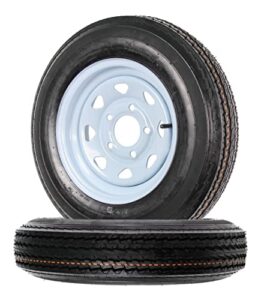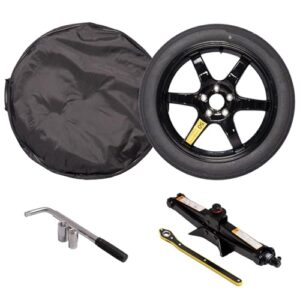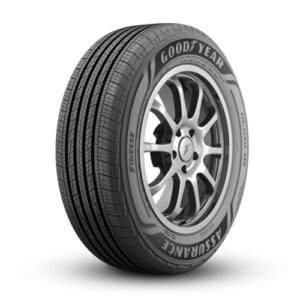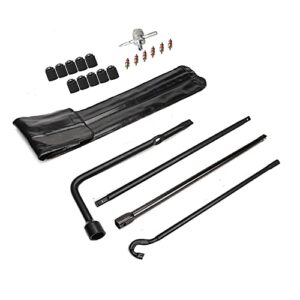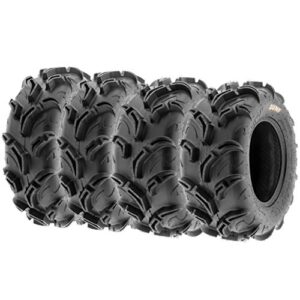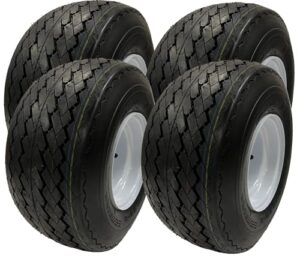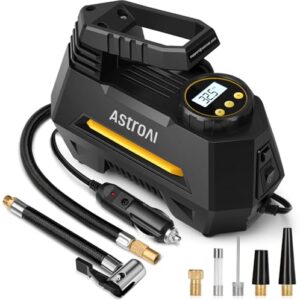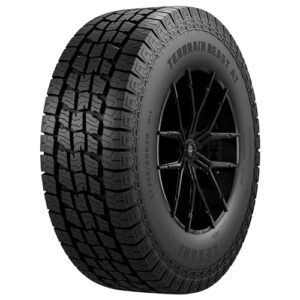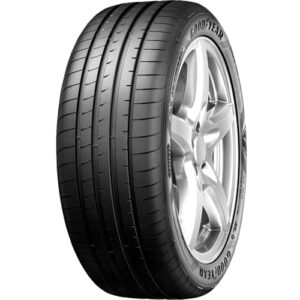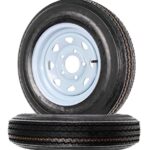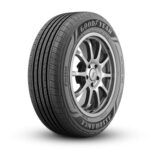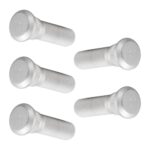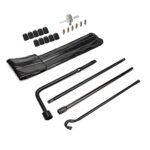If tire pressure is too high, immediately use a pressure gauge to confirm the reading, and then release air until it reaches the manufacturer’s recommended level. Start by pressing the tire valve stem to bleed excess air, checking the pressure frequently.
Maintaining proper tire pressure is crucial for vehicle safety and performance. Overinflated tires can lead to uneven wear, reduced traction, and increased risk of blowouts. Vehicle owners should routinely check their tire pressure, especially during temperature changes, which can significantly affect the pressure.
A well-calibrated tire pressure gauge is an essential tool for this task. Ensuring your tires are not overinflated helps in preserving tire life, optimizing fuel efficiency, and providing a smooth, safe drive. Regular tire maintenance not only contributes to safe driving but can also positively impact the environment by improving gas mileage and reducing emissions. Remember to consult your vehicle’s owner manual or the tire placard for the correct tire pressure settings specific to your car.
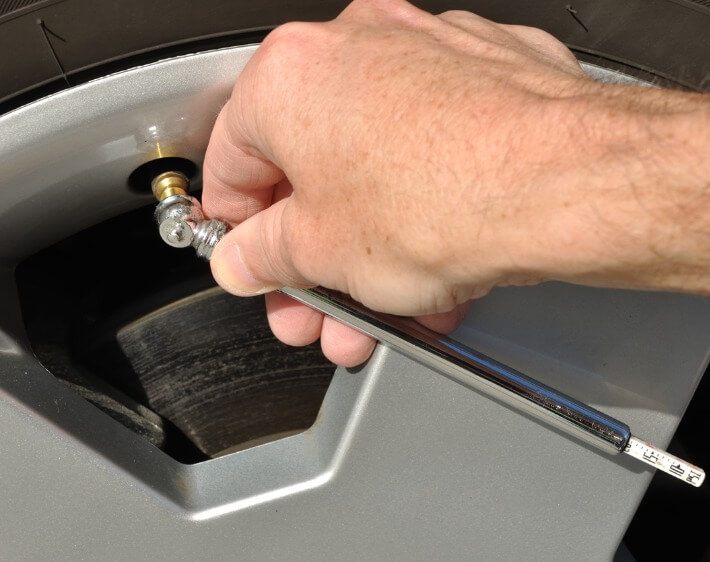
Risks Of Overinflated Tires
Driving on overinflated tires poses several risks. It’s important to recognize the dangers and address them promptly. Overinflation can lead to reduced vehicle performance and safety issues.
Decreased Traction
Overinflated tires can reduce the amount of tire surface that contacts the road. Less contact means less grip on the pavement. This reduction in traction can result in difficulty steering, especially on wet or icy roads. In extreme cases, it could even lead to loss of vehicle control.
Harsher Ride
A tire with too much air becomes less flexible. This stiffness means that instead of absorbing road bumps, an overinflated tire will pass them to the vehicle chassis. Thus, you’ll experience a bumpier and less comfortable ride.
Increased Wear And Tear
Tires inflated beyond their recommended pressure wear out faster. The center of the tread bears most of the load, causing it to erode quicker than the edges. This uneven wear reduces the lifespan of your tires, forcing replacements sooner than expected.
Risk Of Blowouts
Overinflation increases the risk of a dangerous tire blowout. High internal pressure can cause the rubber to stretch and weaken over time. A sudden impact, such as hitting a pothole, could cause an overinflated tire to burst abruptly.

Recognizing Overinflated Tires
Tire health is vital for road safety. Too much air in your tires can cause uneven wear, reduce traction, and even lead to a blowout. It’s key to know how to spot an overinflated tire.
Visual Inspection
Looks can tell a lot. Check your tires regularly. Here’s what to search for:
- Bulging: Overinflated tires bulge in the center.
- Uneven Wear: The middle of the tire may show more wear than the edges.
- Rounded Shape: The tire should not appear overly rounded or balloon-like.
Tire Pressure Monitoring System Alerts
Many modern cars have a handy feature. It’s called the Tire Pressure Monitoring System (TPMS). It warns you when pressure is off. The TPMS alert on your dashboard lights up when tire pressure is too high.
Manual Pressure Check
Don’t rely on looks alone. Use a tire pressure gauge to check the exact pressure. Follow these steps:
- Remove Cap: Unscrew the valve cap on your tire.
- Press Gauge: Firmly press the tire gauge onto the valve.
- Read Pressure: Look at the gauge reading. Compare it to your vehicle’s recommended pressure.
- Adjust Accordingly: If pressure is too high, release some air and check again.
Perfect Tire Pressure
Maintaining the perfect tire pressure is crucial for safety, performance, and efficiency. Too much air leads to less grip and a bumpy ride. Not enough air causes more tire wear and tear. Knowing the right pressure for your tires keeps your ride smooth and your tires lasting longer.
Manufacturer’s Recommendations
Your vehicle’s manufacturer knows best about your tire pressure needs. Find these recommended pressure levels in your car’s manual or on a sticker in the door jamb. Follow these guidelines closely for the best performance. Remember, recommendations give you the perfect balance for safety and longevity.
Checking The Tire Sidewall
Can’t find your manual? Your tire sidewall has info too. Look for the ‘Max. Press.’ marking to find the maximum allowed pressure. Never fill beyond this number! Aim for a number slightly lower for everyday driving conditions. This ensures you avoid the dangers of overinflation.
Factors Affecting Tire Pressure
- Temperature changes can raise or lower pressure inside.
- Driving patterns affect how much air gets pushed out of tires.
- Load carried in the vehicle can compress tires more.
Regular checks every month keep tire pressure in check. Adjust as needed, especially when weather changes or before a long trip. A digital pressure gauge can help you get accurate readings every time.
Tools For Adjusting Tire Pressure
Correct tire pressure is key for safe driving. Too high, and your ride gets bumpy. Not to mention the extra wear on tires. Here’s how to fix that pressure and ensure a smooth drive!
Pressure Gauge
First things first, check your pressure. A pressure gauge is your go-to tool. Get a digital one for ease and accuracy. It’s simple:
- Remove the cap from the valve.
- Press the gauge onto the valve stem.
- Read the pressure and compare it with the recommended level.
Air Compressor
Found that pressure too high? An air compressor comes next. Many gas stations have them. Here’s a quick guide:
- Turn on the compressor.
- Connect it to the valve stem.
- Release some air and check the gauge.
Manual Pump
No compressor around? No worries! Use a manual pump. Here’s how:
- Attach the pump to your tire valve.
- Pump the handle to release air.
- Check with your gauge.
Quick Fixes At The Gas Station
Noticed your tire pressure is sky-high? At the gas station, you can quickly fix this. Stay safe and improve your ride with simple steps to adjust your tire pressure. Follow these quick fixes to get your tires back on track.
Locate The Air Pump
Start by finding the gas station’s air pump. Look for a tall, usually blue or red machine with hoses and gauges. It’s often near the vacuum station. If you’re unsure, ask an attendant. They’ll point you in the right direction.
Use Of The Pressure Gauge
Before adjusting anything, check your pressure with the gauge. These are either digital or analog. Unscrew the cap from your tire’s valve stem. Press the gauge onto the valve stem. Read the display to see your current pressure. Your car’s optimal pressure levels are in the manual or on a sticker inside the driver’s door.
Adjusting Air Levels
If your tire pressure is too high, you need to release some air. Press down on the valve stem with a small tool or the gauge’s nib. You’ll hear air hissing out. Do this in short bursts and avoid letting out too much air at once.
Rechecking Pressure
After adjusting, always recheck your tire’s pressure. Put the gauge back on the valve stem. Ensure your pressure matches the recommended level. If it’s still off, adjust again. Once optimal pressure is achieved, replace the valve caps. You’re good to go!
Diy Tire Pressure Adjustment
Proper tire pressure ensures safety and optimizes vehicle performance. Sometimes you might find tire pressure readings a bit too high. Fear not. A simple DIY adjustment can fix this issue in minutes. Here’s how to do it.
Releasing Air
To release air, first, locate the tire’s valve stem cap and unscrew it. Press down on the valve pin using a tire gauge or a similar tool. You’ll hear a hissing sound as air escapes.
Do this in short bursts to avoid letting out too much air at once.
Monitoring Pressure Changes
It’s crucial to monitor pressure while releasing air. Use a reliable tire pressure gauge. Check the reading after each burst of air.
- Ensure consistency with your gauge.
- Compare pressure levels to your vehicle’s recommended PSI.
Avoiding Common Mistakes
Avoid common pitfalls during DIY adjustment. Ensure you don’t:
- Let out too much air.
- Forget to replace the valve cap securely.
- Overlook checking all tires for uniformity.
Always double-check your pressure levels against the recommended PSI for your specific vehicle.
When To Seek Professional Help
Managing tire pressure is crucial for safe driving. Sometimes, you should consult a professional. This includes persistent overinflation, damaged components, or safety doubts. Let’s explore when expert assistance is necessary.
Persistent Overinflation Issues
Regularly checking tire pressure helps avoid problems. If you find your tires consistently overinflated even after adjustments, seek help. Professionals can assess and resolve underlying issues. They ensure your vehicle’s tire pressure management system works correctly. In some cases, they may recommend changes to your routine or equipment.
Damaged Tires Or Valves
Damaged tires or valves can cause overinflation. Look for these signs:
- Visible tire wear
- Leaking valve stems
- Pressure readings that fluctuate
Checking tires and valves for damage is important. If you see damage or leaks, a professional should repair or replace them. They have tools and expertise for this.
Safety Concerns
Overinflated tires can be dangerous. They may lead to:
- Less grip on the road
- Increased wear
- Potential blowouts
If you feel unsure or unsafe, get professional advice. Technicians can assess if your tires are safe to drive on. Their assessment prevents accidents caused by tire issues.
Taking action at the right time ensures your safety and optimizes driving performance. This keeps you and your tires going strong!
Long-term Tire Maintenance
Maintaining correct tire pressure is vital for your car’s health and performance. It ensures safety, efficiency, and even tire lifespan. This section guides you through essential practices for long-term tire care.
Regular Pressure Checks
Check tire pressure monthly. This simple task can prevent accidents. Use a reliable tire gauge. Ensure you do it when the tires are cold for accurate results. By doing so, you avoid the risks of overinflation.
Rotating Tires
Rotate your tires every 5,000 to 8,000 miles. It helps in wearing them down evenly. It extends their life. Your owner’s manual provides a specific rotation pattern. Follow it closely.
Alignment And Balancing
Balance and align tires as recommended. This practice prevents uneven wear. It also improves handling and fuel efficiency. Professionals use special equipment for this job. Typically, you do this every 2 to 3 years.
Replacing Worn Tires
Inspect your tires regularly for wear and damage. Look for cracks, bulges, or bald spots. A tire’s lifespan varies. Yet, most manufacturers suggest replacing tires every 6 to 10 years, no matter the tread depth. Always replace with tires that match your vehicle’s speed and load rating.
Technology And Tire Pressure
Technology plays a crucial role in maintaining optimal tire pressure. It fosters safety and efficiency on the road. Let’s explore the innovative tech tools that keep your tires in check.
Advanced Monitoring Systems
The advent of advanced monitoring systems marks a leap in tire maintenance. Tire Pressure Monitoring Systems (TPMS) have become standard in vehicles. They flag high pressure instantly. Alerts appear on your dashboard, prompting you to take action.
This tech ranges from simple sensors to sophisticated systems. The latter offer detailed feedback through your car’s interface:
- Bold alerts for quick recognition
- Individual tire pressure readings
- Temperature warnings
Drivers must respond to these alerts. Reducing tire pressure to the manufacturer’s recommendation is key.
Smartphone Applications
In this era of smartphones, specialized tire pressure apps are a boon. They sync with your vehicle’s TPMS or external sensors. Such applications bring convenience to your fingertips.
Noteworthy features include:
- Real-time pressure updates
- History tracking for pressure changes
- Automated warnings and tips for maintenance
With these apps, you maintain pressure easily with just a few taps on your phone.
Future Innovations
Tire technology is not static; it’s on a brisk march forward. Research points towards tires that self-regulate pressure. Imagine driving without worrying about manual checks!
Anticipated advancements:
| Technology | Benefit |
|---|---|
| Self-inflating tires | Maintain perfect pressure |
| Intelligent surfaces | Adapt to road conditions |
| Integrated sensors | Provide exhaustive data |
Stay tuned for these innovations. They transform your driving experience.

Environmental And Economic Benefits
Monitoring tire pressure is crucial for your vehicle’s performance and safety. When tire pressure soars above the recommended level, it can lead to unnecessary wear and heightened fuel consumption. Adjusting your tire pressure not only ensures a safe drive but also supports environmental sustainability and fosters economic savings. Let’s explore the pivotal environmental and economic benefits of maintaining the perfect tire pressure.
Improved Fuel Efficiency
Maintaining proper tire pressure directly influences fuel consumption. Overinflated tires lead to a decrease in the tire’s contact patch – the area of the tire actually touching the road. This reduction can cause your car to expend more energy, since the engine must work harder to maintain speed and stability. Adjusting tire pressure to manufacturer standards optimizes fuel usage, resulting in fewer trips to the gas station and more money in your pocket.
Longer Tire Life
Excessively high tire pressure accelerates tread wear, compromising the lifespan of your tires. The middle part of the tread bears the brunt of the impact, leading to a condition known as ‘center wear.’ Ensuring tires are not overinflated evenly distributes the weight and wear, promoting longevity. This not only means saving on replacement costs but also reduces waste – both key economic and environmental advantages.
Reduced Carbon Footprint
Cars with overinflated tires contribute to higher carbon emissions. As they put additional strain on the engine, more fuel burns, outputting increased levels of CO2 into the atmosphere. By maintaining the right tire pressure, your vehicle operates more efficiently and responsibly. This small action can lead to a significant reduction in your carbon footprint, aiding in the global efforts to tackle climate change.
Frequently Asked Questions
How Much Is Too Much Psi In A Tire?
Exceeding the manufacturer’s recommended PSI, often between 30-35 PSI for passenger cars, is too much. Overinflation leads to reduced traction and increased tire wear. Always check your vehicle’s manual for the correct pressure.
Is 40 Psi Too High For Tires?
A tire pressure of 40 PSI may be too high for many vehicles. Always check the manufacturer’s recommended PSI, typically located on the driver’s side door jamb or in the owner’s manual. Exceeding this recommendation can lead to reduced grip and increased wear.
How Do You Get Air Out Of Overinflated Tires?
To release air from overinflated tires, locate the valve stem, remove the cap, and press the small pin inside gently with a tool until you reach the desired pressure. Regularly check the pressure with a gauge to avoid underinflation.
How Do I Know If I Put Too Much Air In My Tires?
Check the tire pressure using a gauge and compare it to the manufacturer’s recommended PSI found in your vehicle’s manual. Overinflation is present if the reading exceeds the recommended level.
Conclusion
Regularly monitoring your tire pressure ensures optimal performance and safety. If it’s too high, promptly deflate to the manufacturer’s recommendation. Preventive maintenance can save on fuel and reduce tire wear. Remember, correct tire pressure supports a smoother, safer driving experience.
Stay road-ready by checking your tires routinely.




